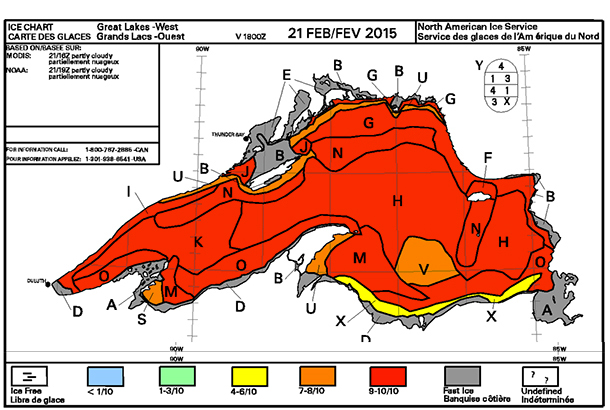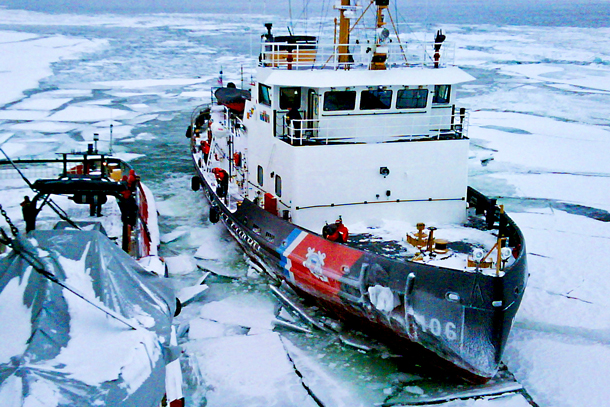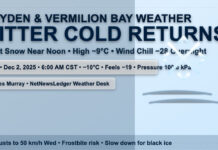
THUNDER BAY – TECH – Cold weather across the eastern half of North America has Lake Superior, and the Great Lakes at almost a ninety per cent ice coverage. The Eastern Seaboard of the United States and the Canadian Maritimes have been hit hard with record snowfall amounts.
This has been at the same time that Western Canada has been setting record temperatures, for warm weather. Several British Columbia communities set new high temperature records on Friday.
For Lake Superior, the extreme cold weather has much of the lake covered in ice. This is the second year that the lake has had major ice coverage. That could impact the 2015 Shipping Season on Lake Superior and for the Ports of Thunder Bay and Duluth.

Ice on the Great Lakes
Average air temperatures were below normal in the first half of February. Air temperatures will be below normal from mid-February to mid-March.
Thunder Bay: February 18 to March 15… Consolidated with thick lake ice.
Nipigon and Black Bays: February 18 to March 15… Consolidated with thick lake ice.
From Grand Marais Minnesota to the entrance to Nipigon Bay: February 18 to March 15… 9 to 10 tenths thin and medium lake ice except 9 to 10 tenths medium and thick lake ice from the shore to Isle Royale.
From Grand Marais to Duluth: End of February… 7 to 9 tenths new and thin with some medium lake ice
except 9 to 10 tenths medium and thick lake ice within 20 nautical miles north of Duluth.
Mid-March…7 to 9 tenths new and thin with some medium lake ice except 9 to 10 tenths medium and thick lake ice within 20 nautical miles north of Duluth.
Southern Lake Superior west of Keweenaw Peninsula: End of February…9 to 10 tenths medium and thick lake ice. Mid-March… 9 to 10 tenths medium and thick lake ice.
Southern Lake Superior east of the Keweenaw Peninsula: End of February… 9 to 10 tenths medium and thick lake ice. Mid-March… 9 to 10 tenths medium and thick lake ice.
Whitefish Bay: February 18 to March 15…Consolidated with thick lake ice.
From Whitefish Bay northwards to Michipicoten Bay: End of February… 9 to 10 tenths thin and medium with some thick lake ice. Consolidated thick lake ice along portions of the shore. Mid-March… 9 to 10 tenths medium and thick lake ice. Consolidated thick lake ice along portions of the shore.
From Michipicoten Bay to the entrance to Nipigon Bay: End of February…9 to 10 tenths thin with some medium lake ice. Mid-March… 9 to 10 tenths thin and medium with some thick lake ice.
Elsewhere in Lake Superior: End of February…A small open water area in the eastern section of the lake otherwise 9 to 10 tenths thin and medium with some thick lake ice. Mid-March… 9 to 10 tenths medium and thick lake ice.






